|
|
Before 1937, all entry to the parks was via an unsealed road up to the present day park boundary, then, from there, a rough bush track into the main valley. In 1937, the local council put a road in as far as the base of The Pyramid. The road to the current day-use and camping areas was sealed in 1984.
Phone services were established in the late 1940s via a manual exchange. Electricity arrived around 1970, when an automatic telephone exchange was put in at Wyberba.
The ranger's office was in Gunn's Cottage from 1966 until the current Visitor Information Centre was built in 1978. The Queensland government built the centre with the condition that Bill Goebel supplied the rocks needed. The information centre was extended in 2002, with toilet, kitchen and locker facilities for the staff.
|
|
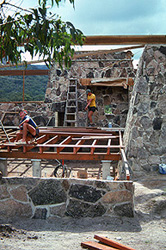
|
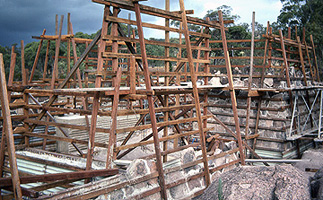
Under construction, February 1977.
|
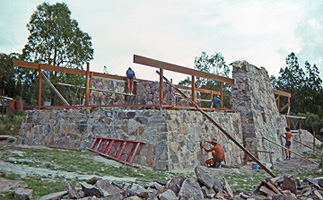
February 1977.
|
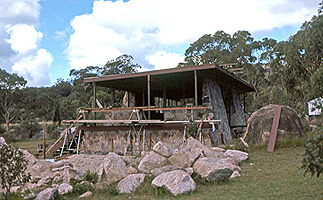
June 1977.
|
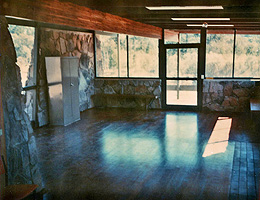
Interior of the Visitor Information Centre, 1978.
|
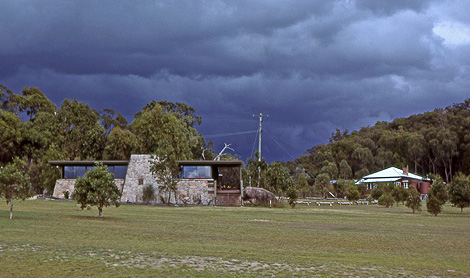
Visitor Information Centre with Gunn's Cottage, April 1979.
|
Although bushwalking groups such as the National Parks Association of Queensland (NPAQ) had been visiting the previous Wyberba National Park since 1937, facilities weren't provided for these groups and camping was basic - to say the least.
In 1966, when Bald Rock Creek and Castle Rock National Parks were amalgamated, the time had come for the newly named Girraween National Park to be transformed from a place of orchards, sheds and house-remains into a national park where people could comfortably explore and appreciate Girraween's natural splendour.
Tom Ryan, on transfer from Queen Mary Falls, commenced employment on 14th February 1966 as park overseer. Tom was in charge of the park's transformation. Bill Goebel commenced employment a couple of days later. Their first task was to remove the hundreds of apple trees that were growing in the present Bald Rock Creek day-use area. This arduous task was not possible without the use of a Fordson major tractor with a chain. Even after all their effort, apple tree seedlings still appear today!
|
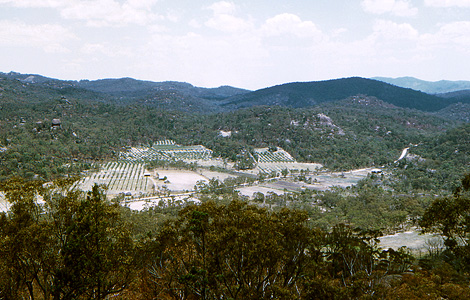
Farmlands and Orchards, 1953.
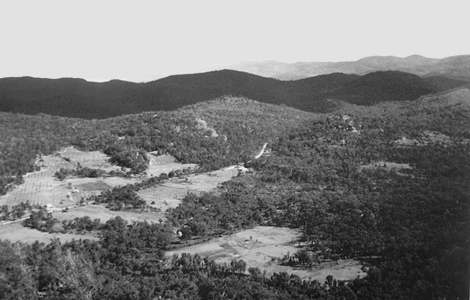
|
View of the same area, March 1966. At the left, on both sides of the road, are the orchards and house of John Thomas. Above the road and to the right of Thomas's are the original plum and peach orchards of Napier "Boy" Gunn. At the centre is Gunn's original apple orchard and house. At the bottom centre is where Ray Wool grew his tomatoes. [Thanks to Tom Ryan for the description.] |
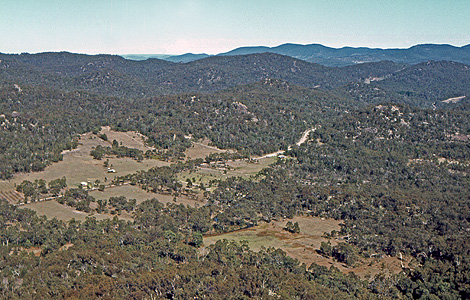
The area under restoration, 1974.
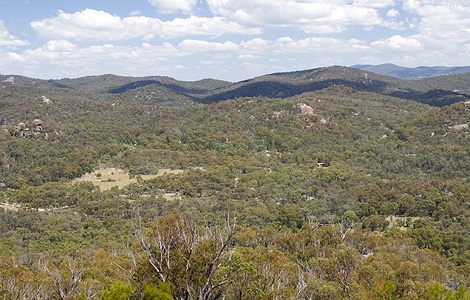
The same landscape in 2010.
|
|
Tom and Bill then commenced building the first toilet block out of granite rock and cement. Every aspect of the construction - from the explosive work, concreting, carpentry to plumbing and painting - was carried out by these two men. Located in the current day-use area, it was used for both males and females and then, later, only males.
|
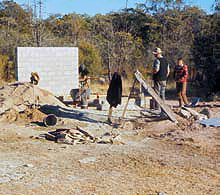
Tom Ryan, Hock Goebel and Johnny Rogers building the Bald Rock Creek day-use area toilets.
|
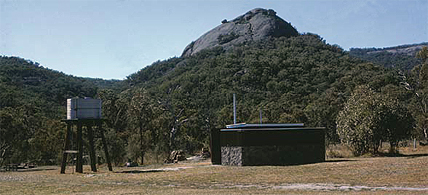
The first toilet block was opened on Christmas day 1966.
|
With the increasing popularity of the park, it became evident that more facilities were needed. In 1967, Bill's younger brother Hock Goebel was employed to help out. These three, with limited assistance, built a second block of toilets in the day-use area and it became the ladies' toilets. Two years later, a third toilet was built for both males and females.
All of these facilities were in use until 2006, when contractors built the current environmentally-friendly hybrid toilet system. This replaced the three sets of septic toilets as part of a major redevelopment of the Bald Rock Creek day-use area.
|
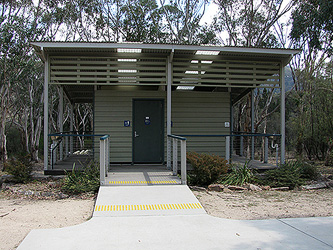
|
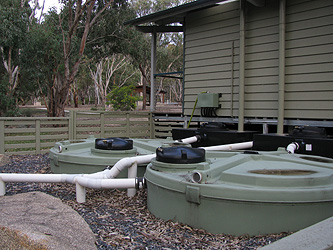
|
The current environmentally-friendly toilets in the Bald Rock Creek day-use area.
|
|

